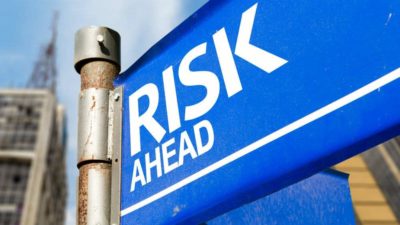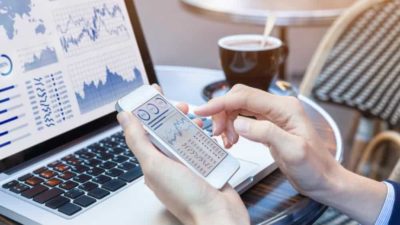When you’re wrestling with a screaming baby and sleepless nights, the thought of your child turning 18 may seem almost unimaginable. But, as your child enters their teenage years, it’s important to prepare for them to take control of the lump sum in their junior ISA.
Sarah Coles, senior personal finance analyst at Hargreaves Lansdown, comments, “It can be hard to imagine that your kids will ever be responsible enough to hand them thousands of pounds with the confidence they’ll do the right thing. We spend most of their childhoods not being able to hand them a cup of water without the risk it ends in disaster.”
However, if you worry about your teenager blowing their hard-earned junior ISA on a hot-hatch or holiday to Magaluf, you’re in the minority. A recent survey by Hargreaves Lansdown found that 60% of adults aren’t worried about giving a lump sum to their 18-year-olds.
Passive income stocks: our picks
Do you like the idea of dividend income?
The prospect of investing in a company just once, then sitting back and watching as it potentially pays a dividend out over and over?
If you’re excited by the thought of regular passive income payments, as well as the potential for significant growth on your initial investment…
Then we think you’ll want to see this report inside Motley Fool Share Advisor — ‘5 Essential Stocks For Passive Income Seekers’.
What’s more, today we’re giving away one of these stock picks, absolutely free!
So let’s take a closer look at the decisions 18-year-olds typically make with their junior ISAs, and how to prepare teenagers for taking control of their finances.
[top_pitch]
What happens to your child’s junior ISA when they turn 18?
On a child’s 18th birthday, their junior ISA automatically converts into adult ISA. At that point, your child has complete control over their ISA. They can leave it invested, add more money to it, or withdraw some (or all) of it.
Parents contribute an average of £87 per month to Hargreaves Lansdown’s junior ISAs. This can grow into a sizable pot, with the average HL junior ISA worth over £7,000 on maturity.
Given the annual allowance has recently doubled, junior ISAs could be worth even more in the future. If you were to contribute £9,000 annually and achieve 9% growth for 18 years, your child’s junior ISA could be worth over £400,000.
If you’re in the majority of parents trusting their teenagers with a lump sum, “the good news is that this faith seems perfectly justified” according to Sarah Coles. Around 94% of HL clients whose junior ISAs converted into ISAs still have money invested a year later.
Sarah Coles adds that “Among those who spend at least some of the cash, it’s not safe to assume they’ve done anything other than make a sensible decision about something that will improve their life for years to come – such as buying a car or supporting them in their studies.”
Tips for preparing your teenager for financial freedom
Sarah Coles provides the following tips to equip teenagers with the necessary skills to take control of their personal finances.
1. Prepare children as early as possible
Giving younger children pocket money helps them to understand the basics of managing money. Teenagers could be encouraged to budget by paying for clothes and socialising from a monthly allowance.
2. Let children make mistakes with money
Sarah Coles advises parents to let children make poor decisions with their money. This enables them to “get to grips with this when the stakes are low rather than waiting until there’s more to lose”.
3. Talk to them about their junior ISAs
It’s worth telling your child about their junior ISA so that they can see its value and how it’s growing each year. Sarah Coles believes it prompts them to “think far harder about what they do with it than getting a lump sum out of the blue.”
4. Discuss what to invest in
This is a good opportunity to introduce children to the basics of investing, including funds and shares. My teenagers pick the investments for their junior ISAs, having learnt how to research the options. They also enjoy trying to beat the returns from the investments I’ve chosen for my ISA (I enjoy this less).
5. Use the lure of technology
Given most teenagers are surgically attached to their phones, they may like to use the various apps on offer to monitor their junior ISAs.
My teenagers’ junior ISAs are held with Hargreaves Lansdown, who offer a user-friendly app for junior ISA customers. My younger son loves to see whether his investments are performing better than his brother’s over breakfast, starting every day with some (unnecessary) sibling tension.
[middle_pitch]
What else should you look out for?
Stocks and shares ISAs offer the potential for far higher returns than cash ISAs. According to Moneyfacts, the average cash ISA returned 0.6% from 2020-2021, compared to 13.6% for stocks and shares ISAs.
What’s more, with current inflation at 6%, money in cash ISAs is losing 5% in real terms each year. The long-term nature of junior ISAs is suited to investing in equity-based investments, such as funds and investment trusts.
It’s also worth reviewing the fees you’re paying when you child’s junior ISA converts into an ISA. These fees can make a surprising impact on the value of their ISA pot. To save you time and money, our experts have compiled a list of our top-rated ISA providers.







